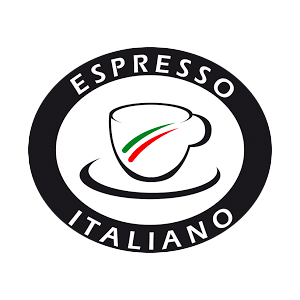FRESH COFFEE FOR MAXIMUM FLAVOUR.
Freshness is a big issue in the food industry. Fresh vegetables from the market, fresh eggs straight from the farm, fresh coffee from the roastery or from the coffee centre. But what does "freshness" mean and how does coffee stay fresh the longest?
Here you will find an overview of all topics relating to the freshness of coffee, optimal storage and the right packaging:
- Freshness as a quality feature → read now
- Flavourings and carbon dioxide → read now
- Freshness of the coffee harvest → read now
- Storing coffee → read now
- Keeping equipment clean → read now
- Packaging as the key to freshness → read now
- The future of packaging →read now
- What doesn't work? → read now
Freshness as a quality feature
Freshness is a measure of closeness to the original product. The term fresh therefore describes products of undiminished quality. If we are looking for freshness in relation to coffee, this means maximum flavour.
Flavourings and carbon dioxide
The roasting process produces two products that are of interest to us in connection with the freshness of coffee: Flavourings andCO2. Both are volatile substances that outgas over time.CO2 makes uniform extraction more difficult and makes the coffee in the cup unbalanced. In this sense, coffee is "too fresh". Coffee tastes best when enoughCO2 has evaporated and the maximum amount of flavouring substances are still present. For an espresso roast, this is normally 2 weeks to a maximum of 3 months after the roasting date. Filter coffee tastes best from 1 week to 1 month after roasting.
Freshness of the coffee harvest
Freshness not only plays a role after roasting, but also before. After harvesting, processing and transport, green coffee loses its freshness. The term "freshly harvested" has already been much discussed and is becoming an increasingly important topic in the coffee industry. Coffee is considered freshly harvested if it is roasted in the same year as it is harvested. Harvest times vary from region to region. The overview at the end of the article provides an overview of when and where coffee is harvested throughout the year.
Storing coffee
Once a packet of coffee has been opened, the longest it will stay fresh is in a dry, dark and cool place. The easiest way to do this is to leave the coffee in its original packaging and seal it tightly. Specialised containers are now available for storage, such as the Fellow Atmos, which creates a vacuum by means of a screw cap, or the Airscape, which actively displaces the air. Both systems help to slow down oxidation and preserve the flavour for longer. Pouring into a conventional can, on the other hand, is well-intentioned but counterproductive. Coffee oils accumulate on the walls of the can, which become rancid over time and spoil the coffee.
The fridge is also the wrong environment for coffee. The low temperature slows down the volatilisation of flavourings. However, the humidity is hard on the coffee and the beans absorb the usual, suspicious fridge odours. Unless you are looking for notes of recent Swiss cheese, green Thai curry or an open packet of salami, get out of the fridge with the coffee.
Freezing coffee is a valid option - but only under certain conditions. It is ideal to freeze the coffee in ready-to-use portions, for example in glass containers or plastic bags, preferably with a vacuum. This means that the desired quantity can be removed directly and processed without further storage. Freezing whole bags, on the other hand, is not recommended, as condensation will form inside when they are opened later, which can affect the flavour and spoil the coffee.
Keep equipment clean
The oils in coffee are carriers of flavourings. These coffee oils oxidise in the air and over time lead to a stale taste not only on the metal wall of the coffee can, but also in all other places that come into contact with coffee. So keep your equipment clean so that you can enjoy really fresh coffee.
Packaging as the key to freshness
The right packaging is crucial to protect coffee beans from their biggest enemies - air, moisture, light and time. Various packaging materials have become established, each with their own advantages and disadvantages:
Aluminium composite with plastic inner layer: Classic coffee bags with aroma valve
- Advantages: Very good flavour protection, high barrier effect, long shelf life
- Disadvantages: Difficult to impossible to recycle, composite materials are difficult to separate
Monoplastic (PE or PP): Recycling-friendly bags without composite materials
- Advantages: Recyclable (if disposed of correctly), less material variety, good flavour safety
- Disadvantages: Not yet standard, slightly poorer barrier effect than aluminium composites
Bioplastics and compostable packaging (PLA): Bags with "compostable" labelling
- Advantages: Made from renewable raw materials, industrially compostable
- Disadvantages: Usually not compostable at home, limited flavour barrier, often problematic in recycling plants
Paper packaging with inner coating: Kraft paper bags with plastic film
- Advantages: Environmentally friendly appearance, partly recyclable depending on structure
- Disadvantages: Paper alone offers no protection, inner coating makes recycling more difficult
Reusable cans made of metal or glass: Standard refill cans
- Advantages: Sustainable when reused, protective and decorative
- Disadvantages: Heavy weight, energy-intensive production, not always airtight
The future of packaging
A lot is happening in the packaging industry: materials such as LDPE (low-density polyethylene) could be recycled almost endlessly in the future through chemical recycling. Refill systems and deposit solutions for coffee packaging are also becoming increasingly important. At the same time, the demand for packaging that is both recyclable and compostable is increasing - a challenge that requires innovative solutions.
What doesn't work?
Not all packaging is suitable for coffee. Open paper bags, simple plastic packaging without a valve or packaging without a barrier effect allow too much air, light and moisture to reach the bean. The result: stale, flat coffee. Transparent packaging is also unsuitable - the light destroys sensitive flavourings and significantly impairs the taste.
The most important tips at a glance
- Enemies of coffee: air, moisture, heat, light and time Optimal period for enjoyment
- Espresso: 2 weeks to 3 months from roasting date
- Filter: 1 week to 1 month from roasting date
- If no roasting date is known: expiry date minus 9 months
- Store in a dry, dark and cool place; preferably in the original packaging
- Grind beans fresh
- Keep equipment clean
- Ensure high-quality, well-sealed and ideally recyclable packaging
 freshly roasted coffee
freshly roasted coffee  Free shipping from CHF 90.00
Free shipping from CHF 90.00 



























































































